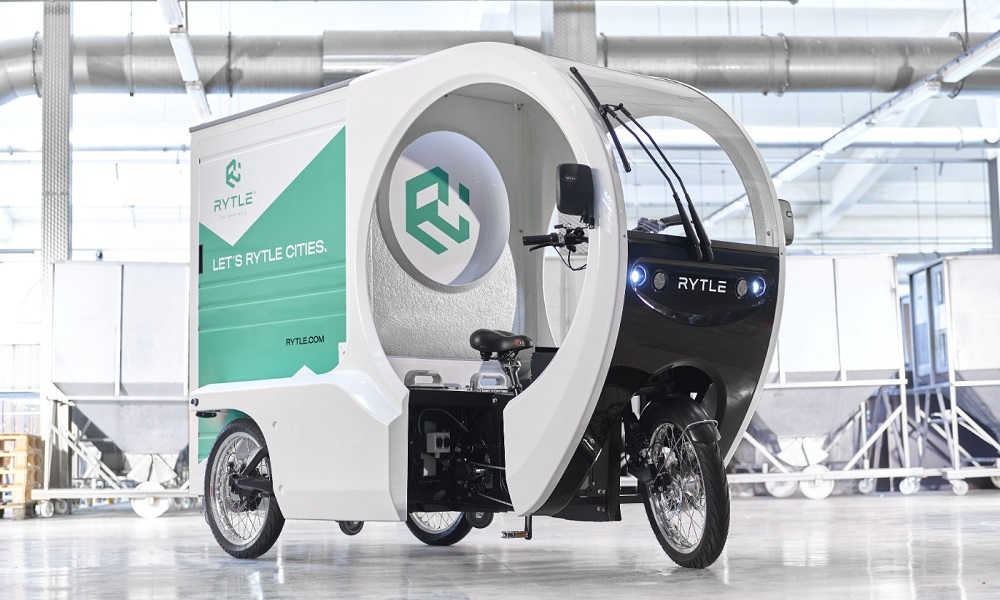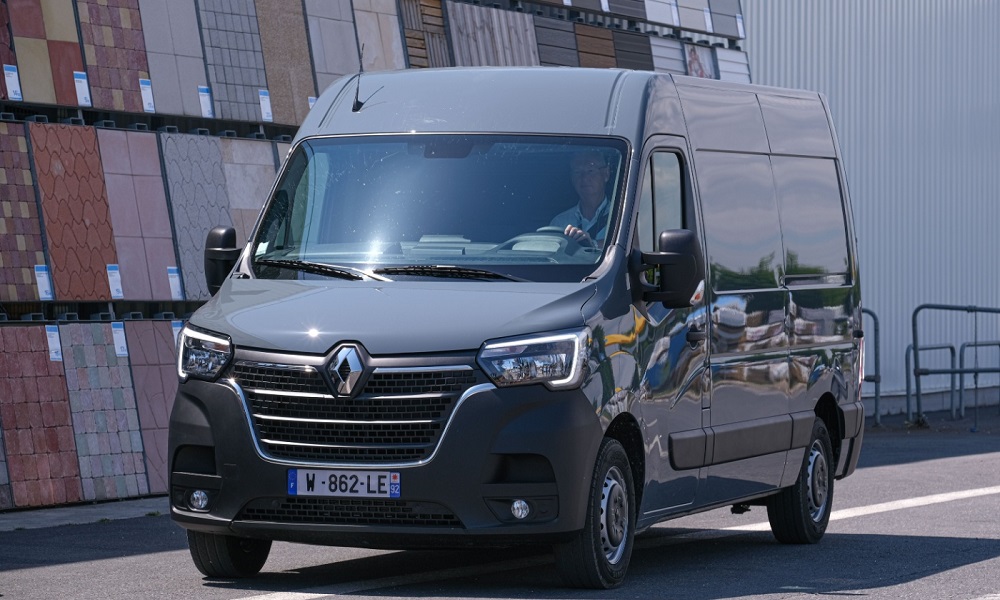The enforced four-year break for the IAA event in Hannover has seen the commercial vehicles market endure the aftermath of the Covid-19 outbreak and a rapid acceleration in digitalisation and e-commerce. This was an event, then, that had a lot of ground to make up and an opportunity to see how the industry was facing up to new challenges that had emerged in the near-half decade since the European industry last met.
Typically, Daimler took its traditional role as a powerhouse in its local market by producing an array of new product and services during its showcase at the start of the week, including the launch of the the heavy-duty, battery-electric Mercedes-Benz eActros LongHaul long-distance truck.
Daimler Truck unveiled the concept prototype of the electric truck at a Sunday evening press conference ahead of the shows proper start the next morning. Headlining the event within an event, was the series-production eActros LongHaul: A truck that pushes the boundaries of long distance runs with an electrified range of around 500 kilometers on a single battery charge. It will also be capable of megawatt charging when it enters the market in 2024.
“Since the last IAA four years ago we have moved forward at full speed with the transition to CO2-neutral transport. This year we already have eight pure battery-electric series-production vehicles in our portfolio,” said Martin Daum, CEO, Daimler Truck.
“However, it’s not enough just to offer the right vehicles. Our customers also need the suitable infrastructure. We are active here at a wide variety of levels. For a rapid build-up, it is essential that the entire industry and governments pull together.”
His collegeaue Karin Rådström, CEO Mercedes-Benz Trucks added: “We are continuously expanding our portfolio of battery-electric trucks. Our focus is on offering clear advantages to our customers. Therefore, our electric trucks are specifically designed for e-mobility, giving them better drivability, energy efficiency and durability.”
Also, with a daily range of up to 800 kilometres and megawatt charging capability, MAN Truck and Bus said its new eTruck could electrify not just long-distance transport, but all common transport segments covered by diesel trucks today.
Alexander Vlaskamp, Chairman of the Executive Board of MAN Truck & Bus, said that he sees the truck industry facing the biggest change in its history. He said he wanted to show visitors to the IAA TRANSPORTATION he wants to show visitors how the transformation can succeed.
“The truck industry is experiencing the biggest change in its history. In zero-emission technologies, we are focusing on electric drives and researching hydrogen technologies. E-drives are already holding their own in regional and distribution transport.
“From 2024, we will put our heavy-duty e-truck on the road. Autonomous commercial vehicles, which are expected to be in use after the middle of the decade, offer great potential in terms of safety and efficiency. In addition, digital networking is playing an increasingly important role. At MAN, for example, application-specific driving programmes can be uploaded to the vehicle over the air.”
On 1 September 2021, Ulrich Proske took over as Head of Strategy, Cooperations & Product Management at Volkswagen Commercial Vehicles (VWN). He said that electrification and digitalisation were the biggest challenges facing the industry ,
“They’re the issues that are greatly occupying our sector at the moment and that we at Volkswagen and Volkswagen Commercial Vehicles are actively shaping: electrification and digitalisation, always against the backdrop of sustainability. And the development of autonomous driving. For us as vehicle manufacturers and developers, these trends go to the very essence of our business and are currently driving a variety of different sectors.”
“It would be too simple to cite data and/or the use of data here, as data is fundamentally influencing and changing almost all sectors. In the transportation sector on the other hand I don’t see any one game-changer, but rather a systematic, evolutionary development: city-centre transportation solutions ranging all the way to the last mile, decentralised hubs, new delivery possibilities (driven by data), enormous demands and possibilities as a result of e-commerce and an extremely exciting outlook with TaaS solutions combined with all-electric self-driving vans.”

Beyond the big German players, small but mighty – and, above all, electric was a major theme shaping for light commercial vehicles at IAA.
Motorised e-bicycles will change the scenery in unprecedented ways, and gain popularity with their flexibility, versatility, and far-reaching coverage. Below is a rundown of the highlights in this product group in alphabetical order.
Bako Motors wants to revolutionise last-mild delivery with the B1, and promises to reduce operating costs for customers by 40 percent compared to conventional vehicles. The electric three-wheeled vehicle B1 has coverage of approx. 120 miles and can expand this with solar cells by up to 30 miles with solar cells. The charging capacity is 2,000 liters. Another advantage of the B1, according to the manufacturer, is its versatility, as it can also be used as a sandwich shop or mobile cafeteria.
Ford’s new Ford Custom Generation series in the 1-ton payload segment will premiere on the market in 2023 both as a versatile commercial vehicle Transit Custom as well as a roomy Limousine Tourneo Custom. The Transit Custom will also be available as an electric, battery-operated E-Transit Custom for the first time. For the cherry on top, Ford will also bring the Electric Super Van to Hanover. The electric show vehicle boasts 2,000 PS.
The electricity-supported Freegônes from French manufacturer Kleuster is supposed to be the ideal cargo bike. The chassis can be equipped with various modules, which will make the cargo bike highly versatile and usable for parcel deliveries, grocery orders, medical transports, city cleaning, and recycling, among other purposes. The Freegônes boasts a payload of up to 770 pounds and 50 miles of coverage, and the battery can be charged at a standard outlet within five hours.
According to the manufacturer, Mubea’s line of Cargo products is essentially a bicycle that’s built like a car and with a high quality standard thanks to premium components. With the electricity-compatible variants Cargo Box, Cargo Pick Up, and Cargo Work, the light-model specialist from Attendorn wants to set new standards for robustness, functionality, ergonomics, loading, and safety. Electricity makes it possible for the motorized bikes to reach speeds up to approx. 16 miles per hour. The Cargo Box variant can carry up to 440 lbs. The Cargo line is also attractive, and the four-wheeled Cargo motorized bike won the German Design Award in 2022.

Renault presented its electric vans to the public in Hanover, including the electric Kangoo and Master E-Tech – and the latter will boast a fuel cell. Thanks to its hydrogen engine – the fuel cell acts as a sort of range extender – Renault’s largest van will be able to cover up to 310 miles, and its energy storage will be able to quickly fill back up at the hydrogen refilling station.
The MovR3 motorised bike is part of a broader concept from the manufacturer RYTLE that even integrates the company’s own software for digital processes and transparency.
With the MovR3, RYTLE presented the latest generation of its cargo bike for the urban space. MovR3 is electric, with full suspension, and even offers the opportunity to transport euro-pallets. The maximum load is 822 lbs, distributed among the driver, a load of 66 lbs in the front, and 566 lbs for loading on the fork (including the container). The MovR3 acts as an electric motorized bike that can reach speeds of up to 15 miles per hour. It can be used as a stand-alone solution, but is also part of an interconnected RYTLE logistics concept.
Along with the MovR, the manufacturer offers other smart cargo bikes, swap boxes (RYTLE Box), independent micro-depots (RYTLE Hub), telematics units, and software interfaces.
According to the manufacturer, the MAXUS MIFA 9 from SAIC MAXUS is the world’s first purely electric, full-size MPV. The acronym MIFA stands for the seven-seater’s key traits: Maximum, Intelligent, Friendly, and Artistic. To quote the manufacturer, the vehicle’s versatile platform can also be used for SUVs and pick-ups. The 17.3-foot-long MPV can cover up to 369 miles with one battery charge. The MAXUS MIFA 9 also boasts the industry’s first smart driving monitoring assistant that automatically detects driving style with data and driving conditions.
The electric compact van Sevic V500e celebrated is world debut at IAA TRANSPORTATION. Bochum-based commercial vehicle manufacturer Sevic specifically designed the V500e for use in urban spaces. Not only does the ability to quickly and flexibly exchange transport structures reduce idle times, but the range of various designs makes it possible to use the vehicle for a number of applications, which makes it particularly profitable according to the manufacturer. Flexibility is also key to the electric compact van’s coverage: The smaller battery design lets it reach distances of up to 93 miles, or 186 miles with the large battery.



